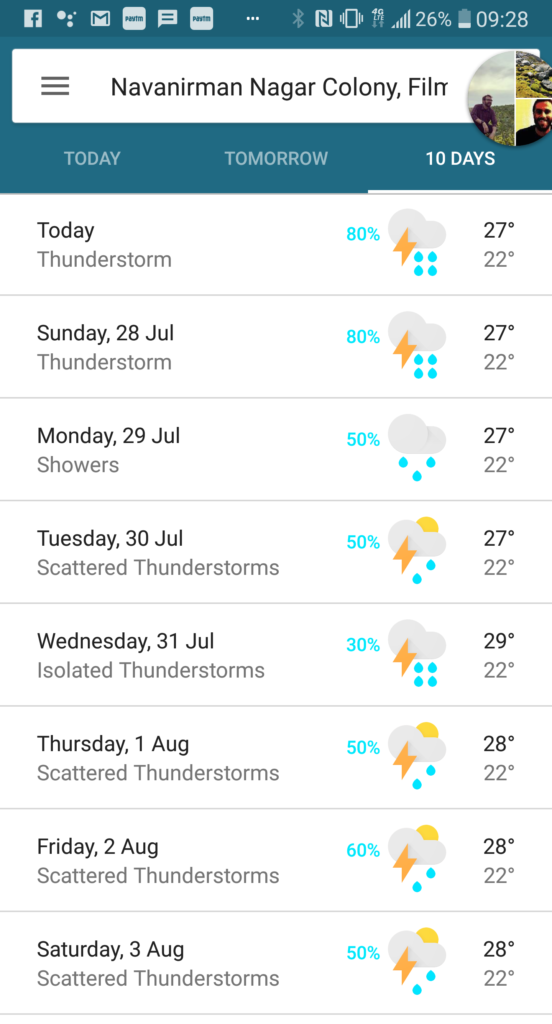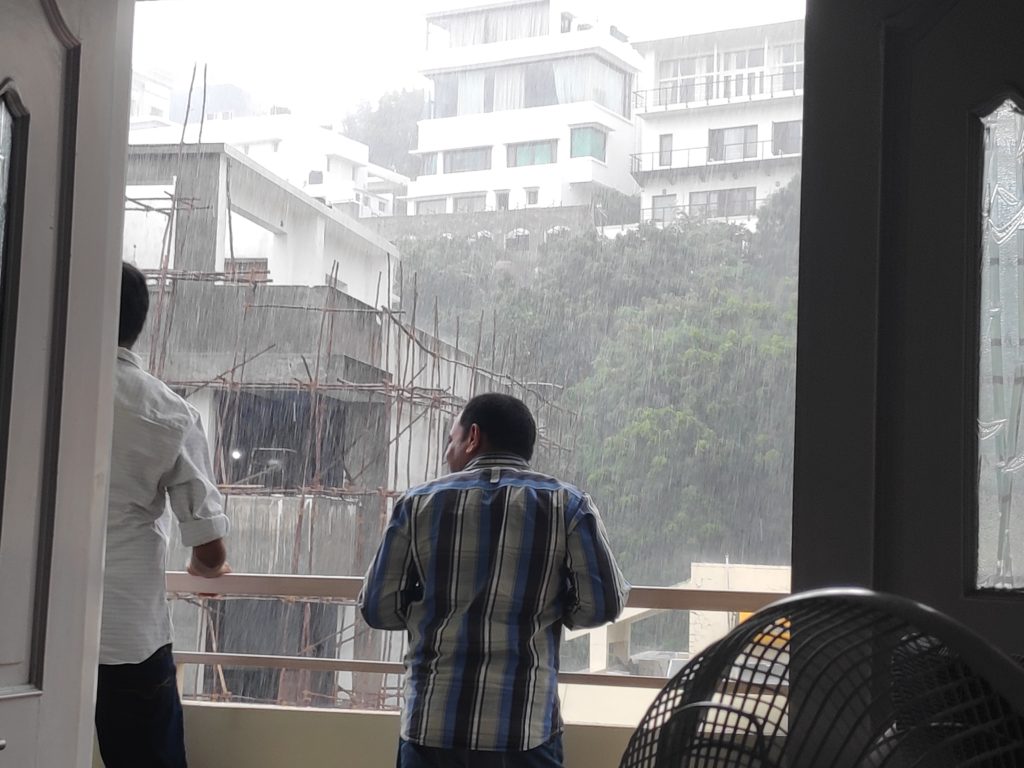33 inches of rain fell in Hyderabad this year. That’s 845 mm (if you share my boss Karan’s radical pro-metric-system views). Or about the annual rainfall of Detroit, Michigan (if you are like my sister and prefer comparisons to random midwestern American cities to either measurement system). Of that rain, 24 inches (610 mm/Fargo, ND) fell between July 12 and September 30. A full 9 inches (225 mm/Albuquerque, NM) fell in my birthday week alone. (Pro tip: don’t try to walk to the bar for your monsoon-season birthday, even if it’s nearby and it’s not raining when you set out.)

The monsoon is actually a tremendously welcome relief from both the intense heat and the brutal drought that summer brings. It does create some challenges getting around, as streets routinely flood, and I frequently had to roll up my pant legs and wade through a foot of water (300 mm/Boise, ID) on the way home from work.

The rain typically comes in a relatively short burst each day in the late afternoon or early evening. Suddenly, in the office we’ll hear the loud drumbeats of heavy rain, and we’ll head out onto the balcony to take a break and watch it pour for a bit. The usual break-time activity of walking five minutes (350 m/not applicable) to our favorite chai stall for two samosas and a ginger chai (for what I’m told is a rather pricey $0.30/₹20/a gumball?) is completely out of the question.
I’ll end with a quick shout-out to the Indian government for their wonderful public datasets on both rainfall and reservoir levels, without which this post would have had many fewer numbers. Due to the uneven seasonal distribution of the rain, water management is a huge issue here (more on that in a later post). It’s really great that they’ve made all this data publicly available and easy to use.
